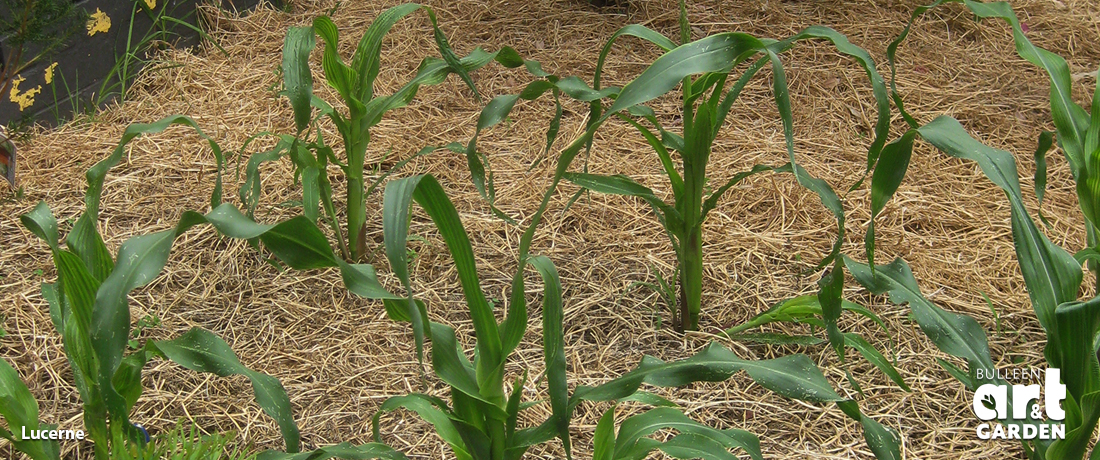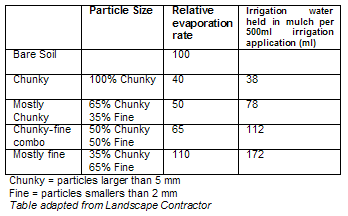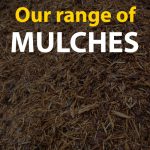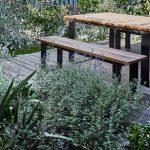
Sick of plants dying or being lost between the weeds? Mulching is something that we often don’t consider until the sun is beating down and all the moisture has been stripped from the soil or the weeds have taken over. Don’t wait until the height of summer to get started!
Mulching your garden reduces moisture loss from the soil surface, thus aiding plant growth, and reducing the need to water. It also lessens the chance of the soil surface drying out and cracking. On top of that, it also suppresses weed growth which reduces competition for water and nutrients and decreases the amount of ‘weeding time’ the gardener has to put into maintenance. Many types of mulch also add nutrients to the soil when broken down, helping to improve soil structure. Mulching also reduces run-off and soil movement from garden beds. So what are you waiting for?
Mulch types
Each mulch has its own set of characteristics that make it suitable for some situations but not for others. Choosing the right type of mulch for you depends on which characteristics best suit your needs. Click here for more information about the different types of mulches we stock.
Organic mulches
Organic mulches are derived from plant material. These mulches include the more traditional pine barks, wood chips and straws. Recycled green waste is also commonly used and is increasing in popularity as the quality and availability improves.
Straw like materials including lucerne, pea straw and sugar cane mulch are considered short-term mulches, these mulches need to be topped up every 6 to 12 months but return nutrients back to the soil and improve overall soil structure. The straw material can mat together and is excellent for use on slopes and annual garden beds. These types of mulches are best laid to a depth between 40-100 mm to ensure effective moisture retention and weed control.
Barks and chips are available in a range sizes, however studies have shown that chunkier barks are better at allowing water to travel into the soil and do not draw water out of the soil like some barks containing fine materials can.

Barks and chips can also bind together quite effectively for use on slopes, if used on a steep slope a mulch containing a range of particle sizes such as a milled mulch or partially composted bark are good options.
The life expectancy of a bark or chip mulch is dependent on the size of the particles. Smaller particles break down quickly providing nutrients back to the soil in a relatively short period of time. Larger particles can take a number of years to break down before they require replacing.
A yearly top up of mulch is normally required for most garden beds for the mulch to remain effective. A mulching depth of between 75 – 100 mm is best.
When purchasing organic mulch, consider where it comes from and the damage caused by removing it from the environment. Mulches that are derived from hardwoods such as red gum chips are rarely considered sustainable. Pine barks are considered a more sustainable option and are a by-product of the timber industry.
Possibly one of the best sources of organic mulch comes from the garden itself. The use of a mulcher onsite can instantly create mulch for use in the garden, the addition of a manure or organic fertiliser prior to laying the mulch can overcome any issues associated with the temporary draw of nitrogen from the soil as the mulch breaks down.
Recycled mulch is the next best thing when mulch cannot be created onsite. Recycled mulch is derived from arborist waste, the material that goes into the kerbside greenwaste bins and council refuge centres. The material is then processed through a windrow composting system that destroys any weed seeds or diseases within the material. The resulting mulch has excellent weed suppressing, water holding, slope stabilising and soil improving characteristics making it ideal for all styles of garden.
Inorganic mulches
The range of inorganic mulches available is ever increasing. Materials from glass to rubber to stone are available in a range of colours, styles and sizes. These products are well suited to more contemporary garden designs but can work equally well in all garden types.
If pebbles are to be used in a design, make sure that they come from a sustainable source. Many of the polished pebbles sold are sourced from active streams, the extraction of these materials causes great devastation to the entire ecosystem.
Remember, if you use an inorganic mulch it is there to stay, so make sure you are happy with your choice. Otherwise you’ll find yourself spending forever picking out the pink coloured glass that seemed like a good idea at the time.
Light coloured pebbles can reflect light back onto the underside of the plant leaves, causing damage to many heat sensitive species. Pebbles need to be laid at a sufficient enough depth to prevent weeds from pushing up though to the surface. Purchasing pebbles in a mix of sizes can help to stop the pebbles from shifting and causing depressions allowing weeds to colonise.
Life span
The longevity of mulch determines how often you will have to replace it, mulches such as pea straw and lucerne have a short lifespan and are best for annual beds and vegie patches. Mulches such as coarse pine bark have a longer lifespan and are good for permanent garden beds. Inorganic mulches such as pebbles are more or less permanent.
Soil Improvement
Organic mulches as the decay help improve the soil structure and add nutrients to the soil. The length of time that it takes for a mulch to break down determines how rapidly the plants will be able to access the nutrients in the mulch. Some mulches as they break down may actually take nutrients away from the soil, this effect is only shot-term but in these instances it may be necessary to add manure or blood and bone prior to mulching. Inorganic mulches have no soil improving qualities and may have a negative effect on soil health.
Water penetration
All mulches conserve moisture already in the soil, certain mulches allow water to penetrate through to the soil more effectively than others. Mulches with fine material don’t allow water to pass through to the soil as readily as coarser mulches.
Appearance
The look of a mulch is important, choose a mulch that suits your garden, a well mulched garden not only looks good, but gives you more time to enjoy doing what you like in the garden, instead of constantly slaving away at weeds.
Source
Mulches can be sources from a variety of places, when buying mulch you may like to consider where it came from. Mulches made from locally sourced green waste from tree loppers and the public have far less environmental impact than mulches made from old growth red gum.
Mulching
Take these few steps before laying your mulch down to ensure success.
1. Remove or poison weeds (then wait for a fortnight after using poison)
2. Moisten the soil thoroughly. Ensure that the water you apply is penetrating .
3. If the water is running off the surface, fork through some compost to aid with the water retention.
4. If you are planting into the soil, add some water saving crystals into the planting hole.
5. If you are using bark-based mulches, you might consider sprinkling some blood and bone over the soil. This extra nitrogen will compensate for any nitrogen being taken up by the gradual decomposition of the mulch.
6. Lay your mulch thickly (7-8cm deep), keeping the area directly around plants free of mulch.
7. Lastly sprinkle soil wetting agents over the surface. This will ensure that any watering doesn’t run off the surface of the mulch.
Following these steps will mean you have mulched well. If you have mulched well, you are entitled to a chocolate biscuit with your tea. May the force be with you.






